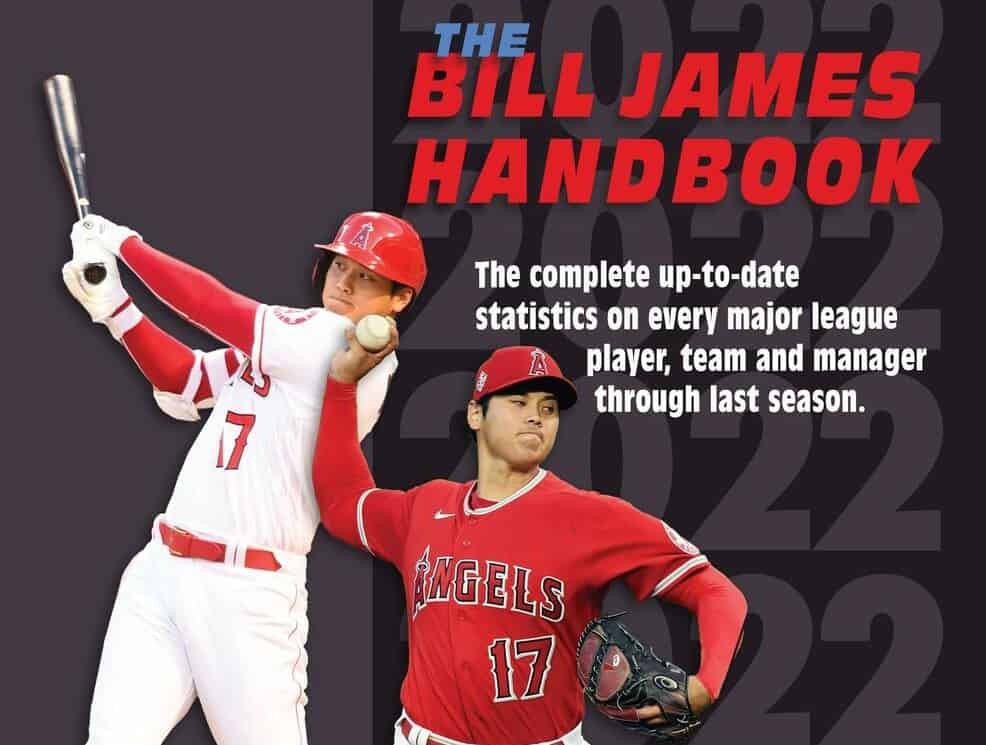With the White Sox's 2022 ZiPS projections fresh in our head, we may as well tackle another offseason tradition by going through the latest edition of The Bill James Handbook for the most granular of facts.
PERTINENT: White Sox 2022 ZiPS projections reinforce notions about needs
Rick Hahn beat me to the punch a little bit, because he referenced Baseball Info Solutions' defensive data when talking about the White Sox's effectiveness when shifting during his end-of-year media conference.
Indeed, the White Sox were dead last in shifts employed with 1,138, and it wasn't even close (the Yankees were 29th at 1,357). They also suffered the biggest year-to-year drop in shifts from extrapolating the 2020 season over 162 games. They saw a decrease of 968 shifts, with the Orioles securely in second-to-last place some 230 shifts away.
Hahn was also correct in saying the White Sox finished in the top 10 in terms of net hits saved. They only saved 95 hits because of shifting, and true to the order of total shifts, the Yankees were 29th. But while there was a difference of more than 200 shifts, it only resulted in a difference of four hits saved.
Meanwhile, the White Sox yielded the fewest hits due to holes in the shift with 61, with Cleveland a distant second (84). So that's how the White Sox finished with a net gain of 34 hits saved, tied with the San Diego and Cleveland for eighth place despite far fewer shifts than anybody involved.
The only problem with leaning on that stat too heavily is that it can reward inaction. Kinda like a third base coach is probably too passive if none of his sends result in an out of at the plate, or a rangeless shortstop can lead the league in fewest errors, a team that sees the fewest shift-foiling hits against it probably isn't shifting enough by default. That team is protecting its percentage more than maxing out the number of opportunities.
Hahn made a valid point, in that you can build a totem pole at first base out of Danny Mendick, Tim Anderson, Yoán Moncada and José Abreu against a right-handed hitter and it'd count as a shift. Still, there's a lot of room between what the White Sox currently do and reductio ad absurdum.
This conversation takes a bite out of the defense section, but the other facts remain intact. For more amusing perusing, you can purchase the book below (bookshop.org link; Sox Machine and independent bookstores receive a portion of the proceeds).
OFFENSE
*José Abreu led the White Sox by finishing 21st in the Handbook's first attempt at hitter rankings, which is the equivalent of the pitcher rankings Bill James established to determine the top arm in baseball, akin to the top tennis player in the world.
*Tim Anderson led all baserunners in scoring from second on a single, going 19-for-23, or 5.4 bases better than average. He was also the White Sox's best baserunner in terms of bases gained (+15).
*The White Sox finished with the sixth-worst performance on the basepaths (-2), almost entirely due to Yasmani Grandal (-23)., who only scored four times from second in 13 chances.
*Grandal led the White Sox in hard-hit rate at 42.4 percent, and led all American League hitters in pitches taken (68.1 percent, well ahead of Brett Gardner's 62.5).
*Grandal destroyed sliders (fourth in OPS at 1.104), Abreu changeups (third, 1.096) and Yoán Moncada curveballs (third, 1.093).
*Leury García finished with the eighth-highest road batting average in the AL (.296).
*Luis Robert's projections, just like in ZiPS, surpassed all White Sox hitters except for Grandal. Robert's pegged for an even more bullish line of .284/.341/.513 here.
PITCHING
*Lucas Giolito is all about finishing 11th. After doing so in the American League Cy Young race, he also placed 11th in the starting pitcher rankings.
*Liam Hendriks not only led the league in saves, but he also led the league in wins resulting from blown saves with four (appropriately shortened to BS Wins).
*Hendriks also led all pitchers in the lowest OPS allowed against lefties by a righty (.433). Among AL relievers, he had the best strand rate on inherited runners (90 percent), and the lowest average (.174) and OBP (.199) allowed.
*Tony La Russa led the American League in long outings for starters with eight, and Joe Maddon was the only other manager with six.
*Carlos Rodón led all pitchers who threw at least 120 innings in lowest batting average allowed (.189) and fewest baserunners per nine innings (9.16). He also yielded the lowest OPS on his fastball (.536), with Lance Lynn fourth at .596.
DEFENSE
*Even with Dallas Keuchel winning the Fielding Bible Award and Gold Glove at pitcher, the White Sox had the league's worst defensive performances at pitcher (-12 runs). Their catchers also had the worst showing of any position for any team (-21), along with the second-worst defense from second base (-14).
*Dylan Cease negated a lot of Keuchel's value by finishing at the bottom of the list for pitcher fielding (-7). Zack Collins provided the least defensive value of all catchers (-18), and it wasn't close (Kurt Suzuki finished behind him at -12).
MISCELLANEOUS
*The White Sox stood with the Astros, Giants and Dodgers as the only teams with winning records in every single month of the season.
*Leury García finished behind only Chris Taylor when it came to positional value and versatility score.
*Guaranteed Rate Field was the second-best home run park in the AL behind Camden Yards, but it also had the second-highest index for infield errors. Maybe it's finally time to put Roger Bossard on blast.
*The White Sox tied the Brewers for the fewest challenges in baseball (27). another case where a smaller denominator boosted percentages to suboptimal results. The Sox went 15-for-27, while opponents went 20-for-39. This field, the long starts and the shifts are were La Russa stood out from the pack in his return.






